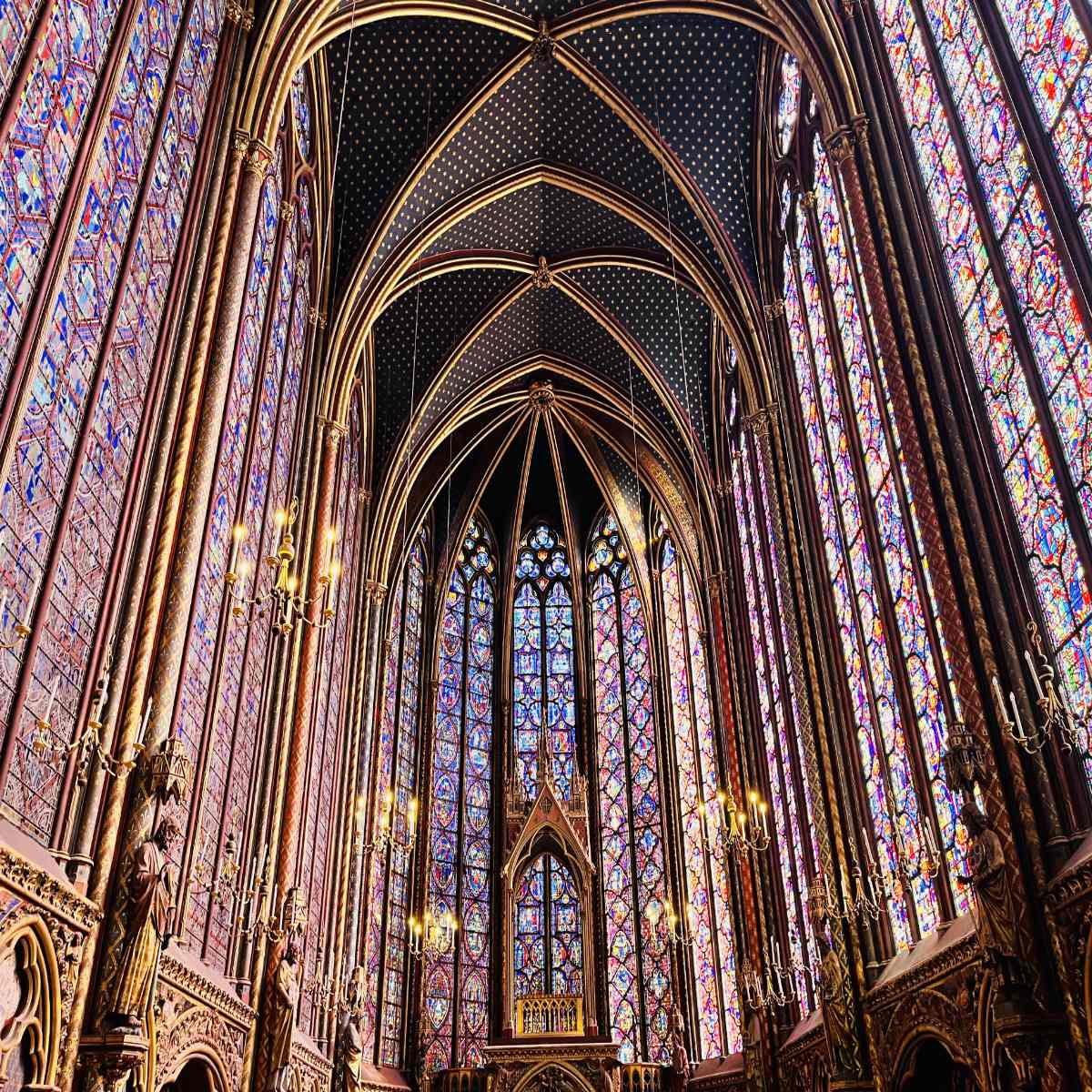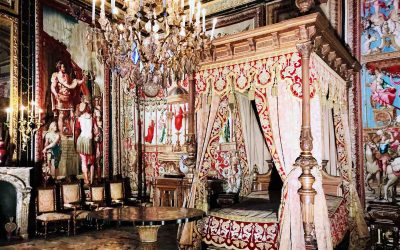In the heart of the Paris, hidden behind thick stone walls on the Ile de la Cité, sits one of the most beautiful churches in all of France.
No, it is not the world-famous Notre Dame de Paris Cathedral. Rather this stunner is known as Sainte Chapelle. (That means “Holy Chapel” in plain old English.)
The building is in the courtyard of the Palais de la Cité (Conciergerie), and not on any main street. It is right next to the legal courthouses in the Palais de Justice, which makes it difficult to enter because of security reasons.
But I promise you this incredible church is well worth a visit. Sainte Chapelle is famous for its 360° stained glass windows that surround the main chamber almost in its entirety.
The architects were clearly aiming for the “awe and wonder” factor, and goodness have they hit the bullseye. Because this was not just a building for worship.
The building was meant to become the jewel case for some of the most precious relics and treasures of the Christendom. So let’s find out how the breathtaking chapel came to be, along with some facts and history of Sainte Chapelle. Allons-y!
- 1. It was constructed in the 13th century by King Louis IX.
- 2. There were 22 holy relics kept in Sainte Chapelle.
- 3. The Chapel cost less than the relics.
- 4. Sainte-Chapelle was consecrated on April 26, 1248.
- 5. There is an Upper and Lower part to the Chapel.
- 6. The architect of the Sainte-Chapelle is unknown.
- 7. The stained glass windows illustrate biblical scenes from the Old and New testaments.
- 8. The chapel is decorated with the royal emblems of Louis IX and his mother Blanche of Castille.
- 9. The building was badly damaged during the French Revolution.
- 10. It became a storeroom for files of Ministry of Justice.
- 11. Many of the stained glass windows are reproductions.
- 12. There is no alter in Sainte Chapelle as it was secularized by the French government.
- 13. The Royal relics were moved from Sainte Chapelle to Notre-Dame de Paris.
- 14. The stained glass was removed and placed in storage during the world wars.
- 15. There is strict security to enter.
1. It was constructed in the 13th century by King Louis IX.
It was constructed in the 13th century by King Louis IX, later known as Saint Louis, one of the most famous saints of France. Saint Louis had earned a sainthood for bringing back the Crown of Thorns and other holy relics from the Crucifixion of Christ to France from Constantinople (today known as Turkey).
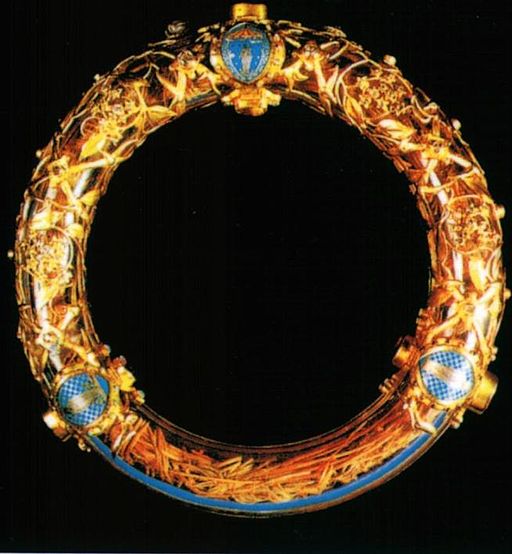
The relics had been sold by Emperor Baudouin II, the last Latin emperor of Constantinople who was seeking to raise funds for his besieged city. He sold them to a Venetian bank and this is how King Louis IX acquired them.
He needed a place to showcase his new prized possessions and Saint Chapelle was built in order to hold the holy relics.
2. There were 22 holy relics kept in Sainte Chapelle.
King Louis IX acquired many relics over the years and placed them within Sainte Chapelle. The most outstanding relics were kept in the large reliquary which sits enthroned in the apse of the Upper chapel.
They were believed to have included:
- the Holy Crown
- the Blood of Christ
- the Holy Cross
- pieces of nails and spearhead
- the Holy Shroud
- hair of the Virgin
- pieces of the Virgin’s veil
- the rod of Moses
Originally, there were 22 relics that were acquired by Saint-Louis. After much upheaval and the passage of time, there are now only 3 remaining, which are a fragment of the cross, a nail, and the Crown of thorns.
3. The Chapel cost less than the relics.
The Crown of thorns was thought to have been purchased for around 135,000 livres in 1239, which at the time was about 1/2 of the annual income of the country. The relics were stored in a large and elaborate silver chest, the Grand-Chasse, on which Louis spent a further 100,000 livres.
The construction of the Sainte-Chapelle cost much less, around 40,000 livres. Until it was completed, the relics were housed at chapels at the Château de Vincennes (in the 12th arrondissement) and a specially built chapel at the Château de Saint-Germain-en-Laye (in the Yvelines).
4. Sainte-Chapelle was consecrated on April 26, 1248.
Construction of the chapel began around 1241 and it was completed around 1248, when it was consecrated. Like many royal buildings however, minor and major works continued as the building suffered several fires and even floods from the surrounding Seine river over the centuries.
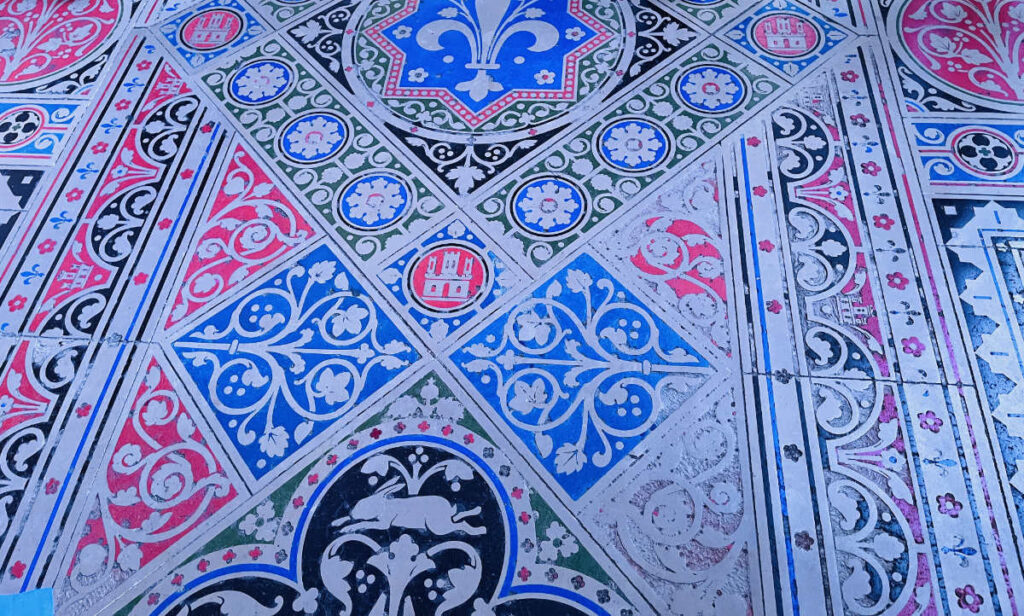
5. There is an Upper and Lower part to the Chapel.
The lower level of the chapel served as the parish church, while the upper level was used only by the King, the royal family and high nobility. The main entrance today is at the lower level and only a couple of narrow circular staircases connect the two.
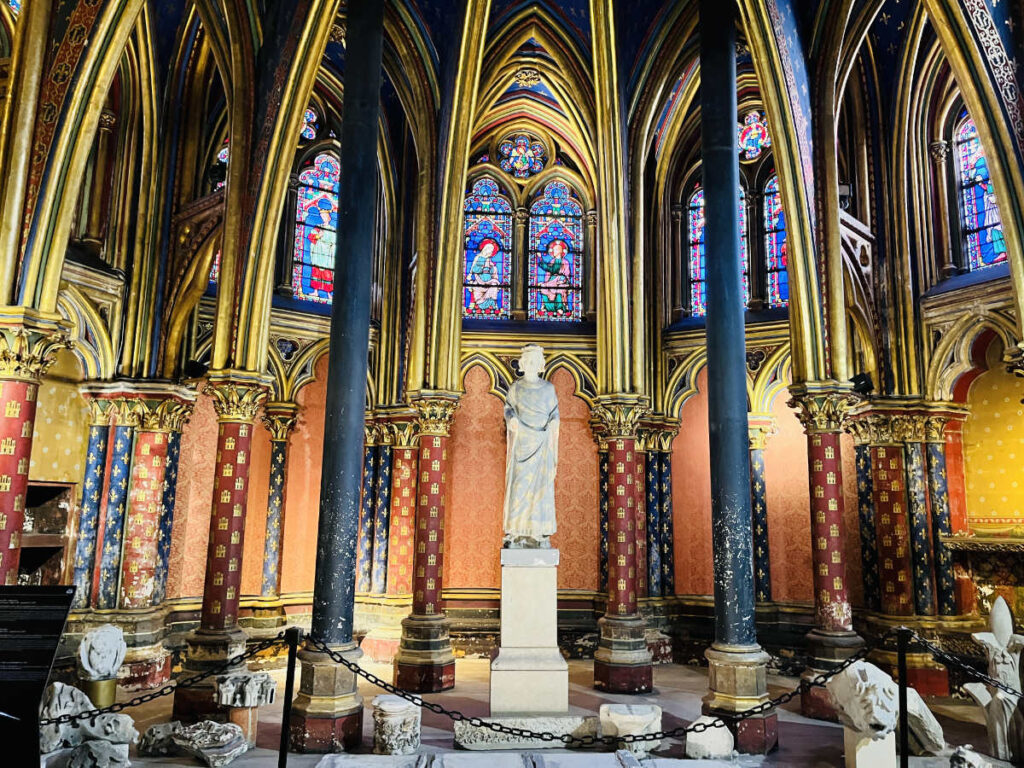
While the former Royal residence is now a working courthouse, in its day the King and other royalty would have been able to walk to the upper chapel directly from their residence.
6. The architect of the Sainte-Chapelle is unknown.
While we know a lot about Saint King Louis, almost nothing is known of the architect of Sainte Chapelle.
We do know that the chapel replaced the old Saint-Nicolas chapel which was destroyed to make way for it, and that construction itself was quite speedy, taking approximately 6 years. Quite an impressive feat, given the size and scale of the monument, especially in the era it was built!
7. The stained glass windows illustrate biblical scenes from the Old and New testaments.
The stained glass windows in the upper chapel illustrate biblical scenes from the Old and New testaments.
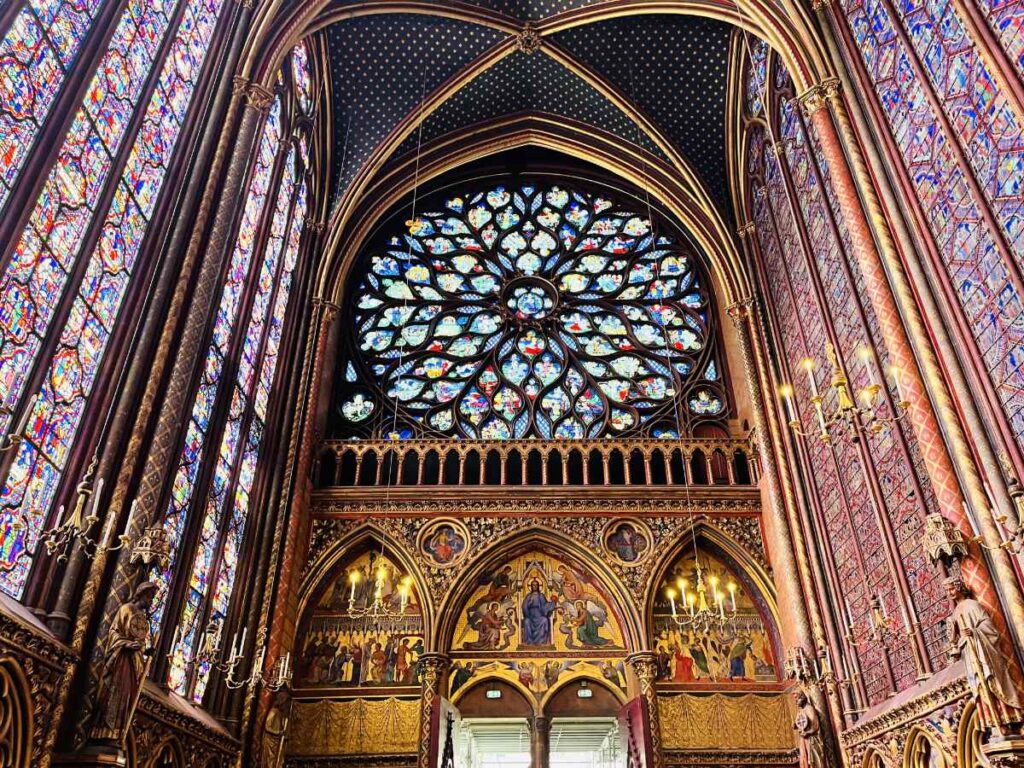
The rose window which is above the entrance into the upper chamber was built after the original chapel 2 centuries later, in the 15th century. It has 87 petals and is an incredible work of art in itself. The illustrations in the rose window depict Saint John’s Book of Revelation.
8. The chapel is decorated with the royal emblems of Louis IX and his mother Blanche of Castille.
The inside of the chapel is highly decorated with sculptures, columns and murals. Among the emblems visible is the royal Fleur-de-Lys emblem of Louis IX and a stylised castle which the coat of arms of Blanche de Castile, Louis IX’s mother.
Queen Blanche was the granddaughter of Eleanor of Aquitaine, and ruled France in the name of her son while he was underage. She died 4 years after the Chapelle was constructed, and would have certainly prayed here.
9. The building was badly damaged during the French Revolution.
During the 1789 French Revolution, the clergy were believed to be siding with nobility. The “age of reason” and the push to secularity, as well as the exclusive nature of the chapel and its construction, made the Sainte Chapelle a target for looters and revolutionaries.
Indeed, Queen Marie-Antoinette herself was held within a few 100 meters in the Conciergerie for several months, until her own turn at the guillotine. It is not known if she was able to pray at the chapel before her execution.
10. It became a storeroom for files of Ministry of Justice.
In 1797, it was transformed into the repository for the Ministry of Courthouse’s archives. Under pressure from public opinion, its restoration was approved in 1836 and would last 26 years.
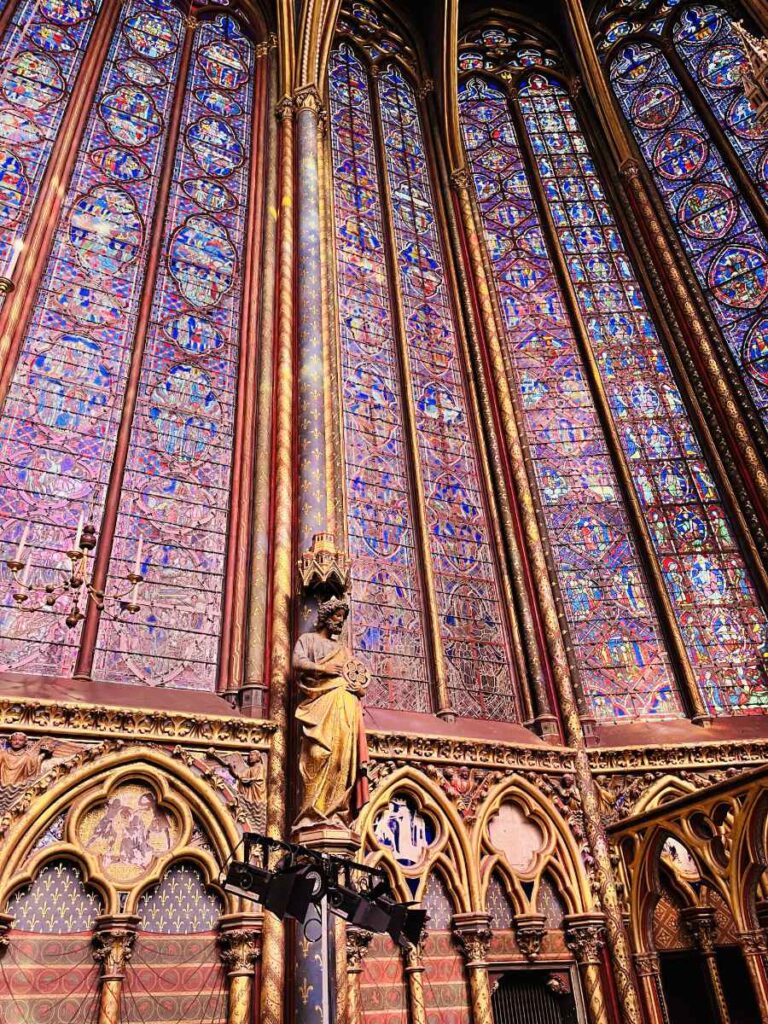
11. Many of the stained glass windows are reproductions.
As impressive as the windows are, most of them are reproductions based on surviving documents about the appearance and construction. The large scale restoration that took place in the 19th century attempted to just restore the missing pieces, rather than entirely renovate the glass, which is why it still retains it historical statue.
Today, it is considered one of the most important monuments of Medieval art in Paris.
12. There is no alter in Sainte Chapelle as it was secularized by the French government.
You will not see a grand alter and you cannot attend mass services in Sainte Chapelle. The building was entirely secularised after the French Revolution.
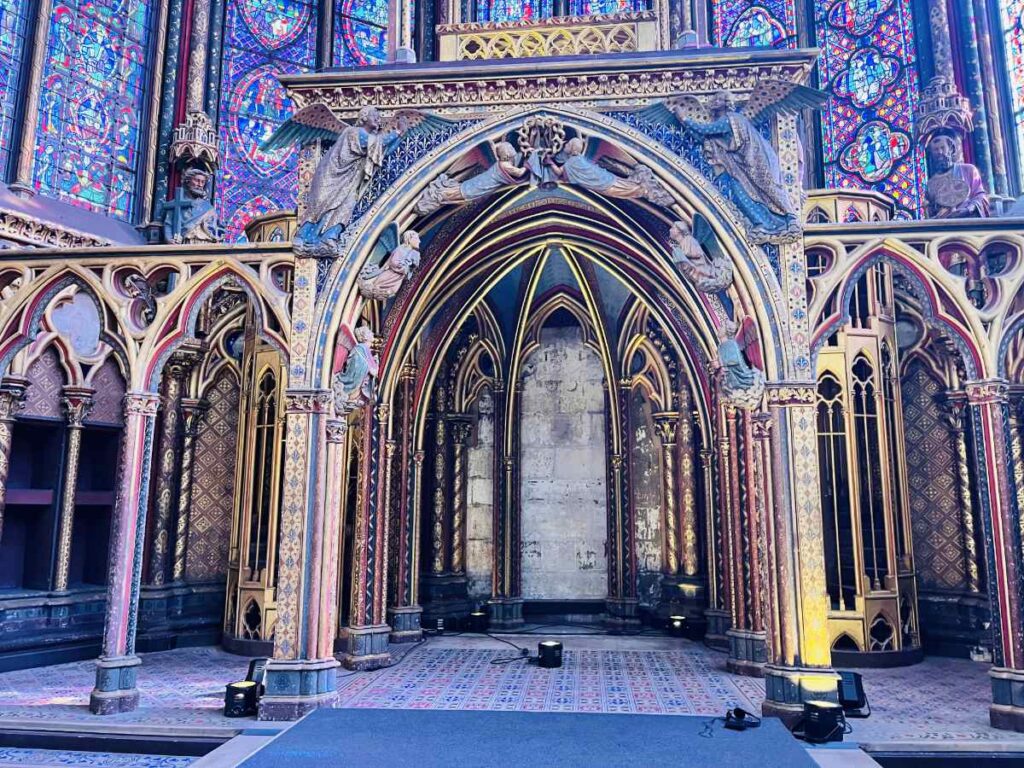
In 1862 the Chapel was classified as an historical monument and these days it is operated by the French Centre of National Monuments, along with the Conciergerie.
13. The Royal relics were moved from Sainte Chapelle to Notre-Dame de Paris.
These relics were moved in 1804 to the cathedral treasury of Notre Dame de Paris Cathedral, to be cared for by the Knights of the Holy Sepulchre. The relics exposed for veneration by the faithful before the cathedral’s high altar every Good Friday.
After the April 2019 fire at Notre-Dame, the relics were moved for safekeeping first to the Paris city hall, and then to the Louvre Museum, although they are not currently on display there.
14. The stained glass was removed and placed in storage during the world wars.
In 1918 and 1939, the stained glass windows were completely dismantled due to the World Wars to prevent damage from nearby shelling. The main police prefecture of Paris is only a few 100 yards away, making the entire Ile de la Cité a target.
The stained glass panels were reassembled and reassembled as they were after the war.
15. There is strict security to enter.
Since the Sainte Chapelle is inside the Palais de la Cité which is now a working courthouse building, there are strict airport-style security checks to enter.
Queues can be long, so if you are planning to visit, book your skip-the-line tickets for access to both Sainte Chapelle and the Conciergerie here.

If you enjoyed that article, you may like to read more about the history of Paris. A bientôt!
